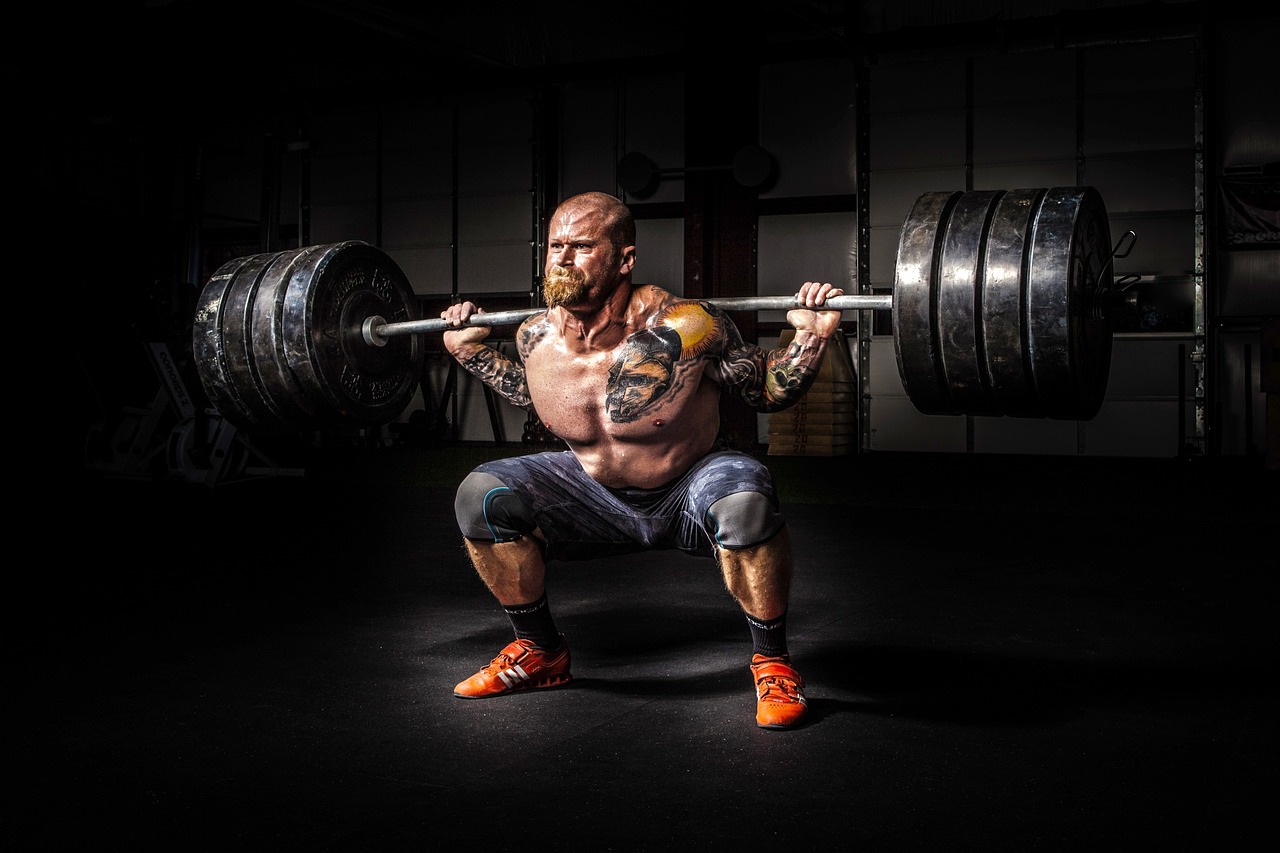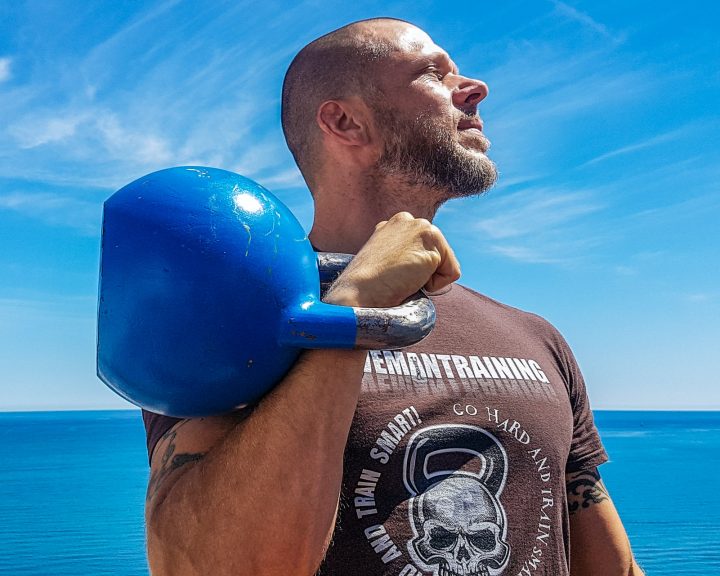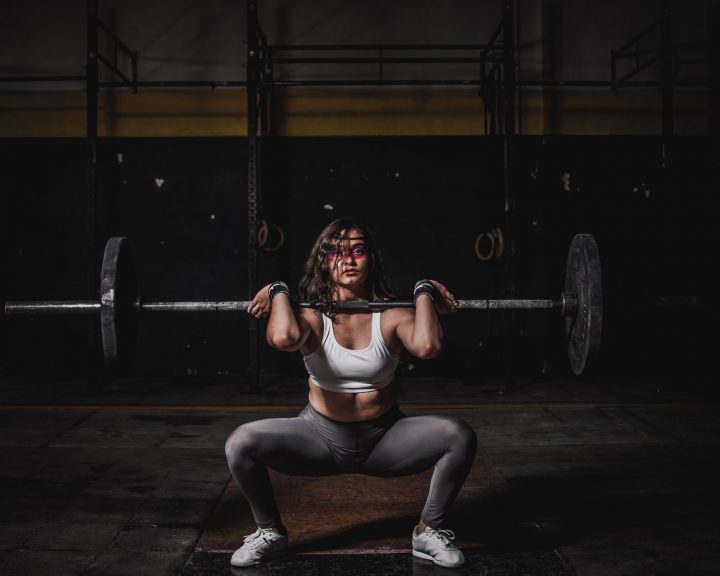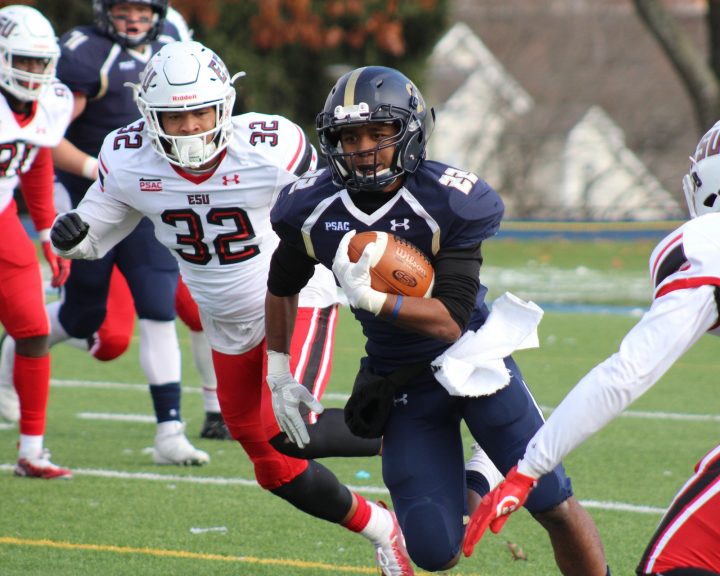The squat and its variations is probably my number one “must do” exercise in athletic strength and conditioning programs, even ahead of the Olympic lifts and hip hinges. The squat strengthens the entire body. Its movement patterns simulate how we move in sports. It involves exerting force against the ground. It trains the body to work together to exert force. It’s a gut check exercise that goes a long way towards developing mental toughness. It also lends itself to team strength and conditioning settings, which a lot of exercises do not.
Back Squats
For me everything starts with the back squat. This is the foundational exercise for squats. This teaches a number of important skills like using the hips to initiate the squat, keeping the feet flat, how to protect the back, and begins developing the trunk and lower body. I approach this with a handful of “must do’s” with coaching the exercise:
- Chest out/shoulders back
- Squat starts by pushing the hips back
- Heels are on the ground
Other than that, I think it’s important for the athlete to work things out in a way that works for them. I don’t stress bar placement (put it where it’s comfortable for you), foot placement (stand naturally), where to look, where to grip, etc. unless it impacts one of my must do’s. For example, if our stance is too narrow and we can’t squat by pushing the hips back, then that has to change.
Front Squats
For the first 10-15 years of my career I was passionate that everyone should do front squats. As a former Olympic lifter I love this exercise. It develops great trunk strength, the motion is different which impacts lower body development, and it takes a lot of skill! My absolutes with this exercise are:
- Chest out/shoulders back
- Elbows up (parallel to the ground)
- Heels are on the ground
The challenge with this exercise is that it can take a long time to teach properly. Some athletes will easily be able to master how to get their elbows up on this exercise, but for many it’s a struggle. The question is whether the return for this exercise is worth all that time that will be spent learning it and, for most athletes in a team setting, I don’t think it is any longer.
Overhead Squats
Nothing looks more impressive than a heavy, well-executed overhead squat. It develops balance and proprioception. It makes the trunk and lower body stronger. It works on shoulder mobility. And it develops lower body mobility. When I was beginning in this field (and was coming to the end of my Olympic lifting days) I even programmed athletes lifting at a percentage of their overhead squat 1-RM!
The challenge is that it is enormously technical. Not only is it technical, but the lifter and the barbell have a combined center of gravity, which has to be lined up with the lifter’s center of gravity (the hips) so that they are balanced when squatting. That combined center of gravity moves closer to the heavier object, so every time the weight is changed on the bar you essentially have a different skill that has to be mastered! It also has the potential to be really dangerous and it requires the ability to drop the bar and bail out if the athlete gets into trouble. Again, in a team setting I’m not sure the return from this exercise is worth the time that must be spent to master it.
My “must do’s” for the overhead squat are:
- Chest out/shoulders back
- Bar in line with the hips
- Heels are on the ground
- Push against the bar (i.e. elbows should not be bent)
Split Squats
With split squats, the athlete is in a split stance where one foot is in front of their body and the other foot is behind. The athlete then lowers themselves on the front leg and then stands back up. This is probably my second-favorite squat variation in a team setting because many sports skills are performed with one foot on the ground at a time (sprinting), levering off one side of the body (throwing, kicking), or using one side primarily (shuffling). This exercise is a great variation to help train this.
My “must do’s” for the split squat are:
- Chest out/shoulders back
- Front heel on the ground
- Keep the back knee off the ground
What about exercises where the back leg is off the ground? For example, what if we put the back leg on a bench or a stability ball so that the front leg has to do more work? I’m not a fan of this in a team strength and conditioning setting for several reasons.
First, it requires more equipment which limits how many athletes can train at one time. If I need a squat rack, a bar, and now a bench for the back foot then we’re beginning to tie up a lot of equipment.
Second, getting into the correct position is really challenging and takes time. The one thing you don’t have in a team strength and conditioning setting is time. Not only are we tying up more equipment, but now we have to wait while the athlete hops forwards and backwards to get lined up just right for the exercise and this is time we could have spent training.
Finally, in a team setting this exercise is a great way to get hurt.
So, my two favorite squat variations in a team setting are back squats and split squats. Now, with just those two exercises there are things we can do to make them more challenging for more advanced athletes (note these can be done with any type of squat).
Pause Squats
Squat down, hold the bottom position for a slow count, then explode up. Reinforces technique, helps develop eccentric strength, teaches the athlete to be explosive. I normally start this with 50% of what the athlete would have trained with for sets of no more than 3-6 reps. Technique is huge on this variation. An athlete can eventually work up to over 70% of what they would have trained with on the squat.
Eccentric Squats
Take ten slow seconds to descend to the bottom position and then explode up. Reinforces technique, helps develop eccentric strength, teaches the athlete to be explosive. Same loading as with pause squats.
Squats with Bands or Chains
These are great for advanced athletes that are beginning to reach a plateau on their squats. These can be done with any variation of the squat. I’ve actually gotten to the point where I like to use these on warm up sets and then take them off for the main weight sets.
Every variation of squat mentioned in this article can be done in a team strength and conditioning setting, you just need the racks for them. Have one athlete lift, one to two spot and load, could even have another athlete do something else and rotate through!




